Supermoto and dual-sport motorcycles are very similar in appearance, so it can be quite confusing to understand the differences between the two.
Both types of bike are built to fulfill very specific purposes and needs for different types of riders, which is why it’s important that you fully understand the differences, so you can make the right choice for your needs.
If you’re not keen on research, don’t worry. We’ve broken down the main differences between the two for you so you need never be confused again.
Let’s get started.
What Are the Main Differences Between a Supermoto and Dual-Sport Motorcycle?
The main differences between supermoto and dual-sport motorcycles come down to a handful of factors:
- Purpose: Dual sports are meant to be super versatile and offer good off-road performance, whereas supermotos focus on street performance.
- Tires: Dual sports normally have a 21” front tire and 19” rear, and supermotos have 17” tires, front and back.
- Brakes: Brake rotors on a supermoto are bigger on the front than on a dual sport.
- Forks: A dual sport is usually equipped with a standard fork, but a supermoto fork will be inverted.
- Size: Dual sports tend to be a bit taller with more ground clearance than a supermoto.
- Price: Supermotos generally are more expensive.
What Is a Supermoto?
Supermoto started off as a racing event back in the 1980s, which involved racers from road, motocross, and flat-track disciplines all competing in the same event. At the time, riders would convert their street bikes or dirt bikes to make them suitable to race, but, eventually, manufacturers began producing factory-built supermotos.
A supermoto has all the features and tenacity of an off-road motocross/enduro motorcycle with the added benefit of being practical for high-performance street riding.
They tend to be lightweight, narrow, and quick, with sports-bike-style braking systems, along with inverted forks and sports-bike tires.
A supermoto encourages your inner hooligan and combines off-road and sports-bike riding into one package. You can hit hard-packed dirt trails and jumps or serious lean angles on the track, or you can just have the best commute ever, with excellent agility and the freedom to pop wheelies to your heart’s content.
One of the most recognised supermotos is the Ducati Hypermotard, which debuted back in 2007.
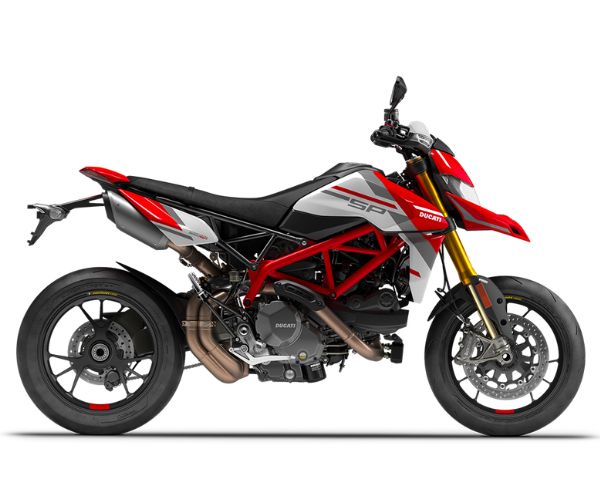
Today, the Hypermotard 950 SP is the peak of supermoto performance. At $18,695, the Ducati is pricey, but with carbon-fiber components, Marchesi wheels, and all the Ducati tech, the bike is an absolute monster — arguably the current King of Supermoto.
While supermotos tend to be quite expensive, there are some on the market today that are more accessible than others, such as the Kawasaki KLX230SM, which has an MSRP of $5,299.
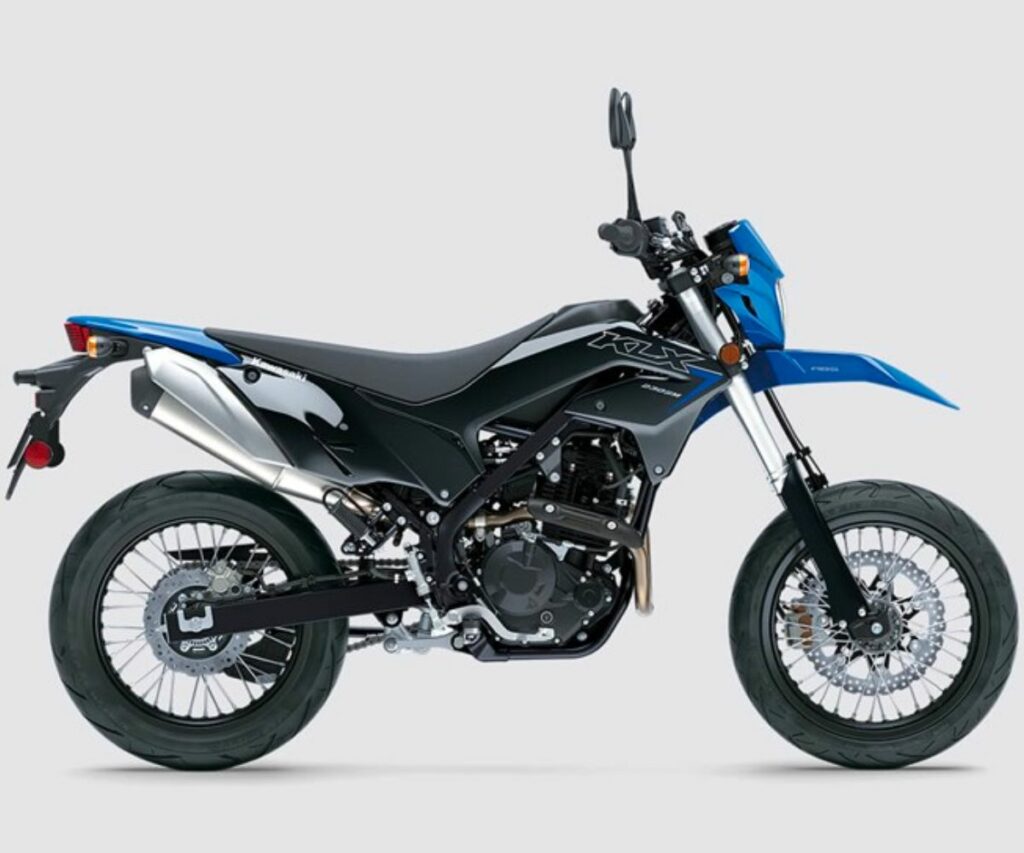
Check out this post for some of our favorite affordable supermotos.
What Is a Dual Sport?
A dual-sport motorcycle is kind of like a lighter, smaller adventure motorcycle. Where a supermoto takes street performance most seriously, a dual sport prioritizes a quality off-road performance.
Dual sports are derived from enduro bikes, with added details like headlights, screens, and license plates, which make them not only street legal but also practical for street riding.
Engine tuning, gear ratios, selected suspension, and tires are among some of the things on a dual sport that will differ from their enduro siblings to make them much more polite and practical on the road.
The BMW GS 1200 is a huge, heavy adventure bike. There is no denying that it is capable of both street and dirt riding for big expeditions. However, for many riders, a dual sport is easier to handle, more fun to maneuver, and suited to smaller weekend jaunts.
My favorite dual-sport motorcycle on the market is the Honda CRF300L Rally. It truly epitomizes the freedom a dual sport can provide a rider. The bike is equipped to take you off road into the deepest forest trails, and yet it will also carry your bags for your everyday commute into town and make it a breeze.
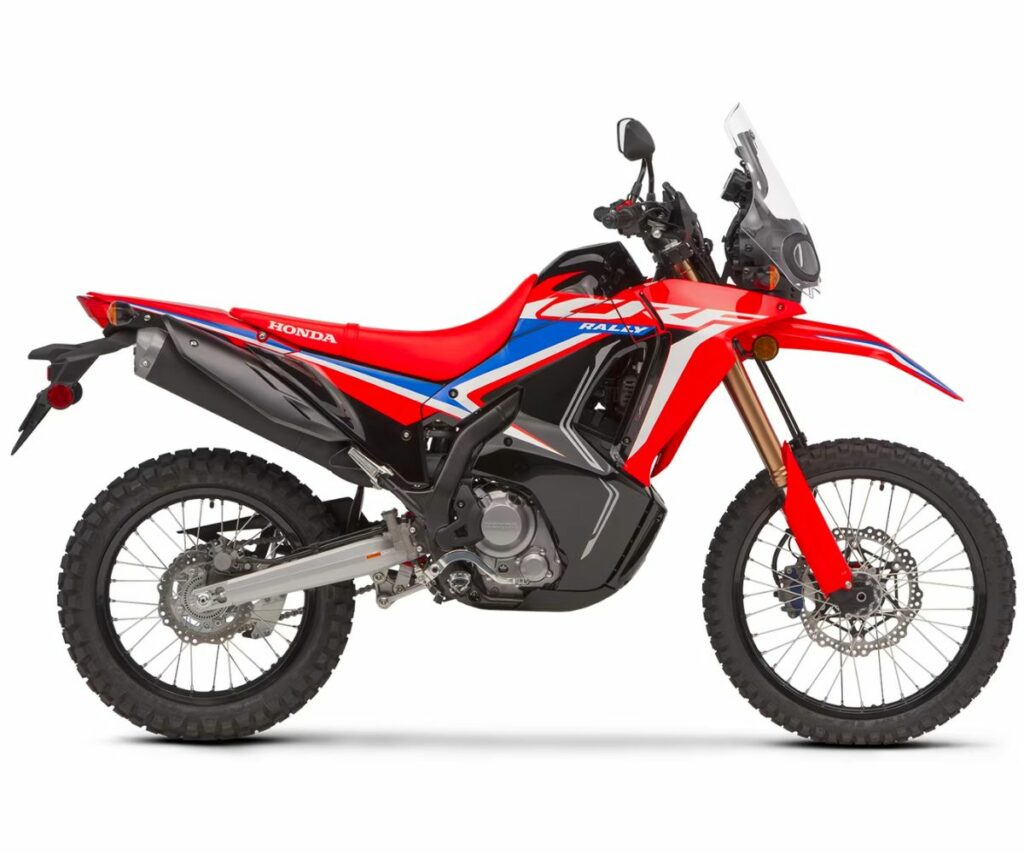
When the road runs out and hits the trail, but you want to keep going, that is when a dual sport is in its element.
Read more about the best dual sports motorcycles.
Main Differences in Detail
Purpose
A supermoto’s purpose is to combine the best off-road qualities with sports-bike-style performance for an exhilarating road and/or track experience.
A dual sport’s purpose is to be as versatile as a motorcycle can be, combining comfortable road performance with quality and competent off-road performance.
Supermotos are road-focused, whereas dual sports favor the dirt.
Tires
Supermoto tires are typically 17” front and back. They are built for speedy riding and holding the road with great traction. You will feel every bump in the road, but you can lean the bike over in corners with great confidence, knowing you have plenty of grip to glue you to the road, particularly at speed.
Dual-sport tires will usually be fitted with a 21” tire on the front and a smaller 19” tire on the rear. Their selection is based on how they perform on the dirt but also how they hold on to the road. They usually have excellent traction on a wide range of surfaces and will aid with precise handling on the road but be just as capable of carving through trails.
Brakes
Because supermoto bikes are equipped with other sports-bike features, it’s imperative that they have as much braking power as possible. This is why you will find bigger brake rotors on a supermoto than on a dual sport.
A large brake rotor allows the rotor to cool easier for better stopping power. Therefore, bigger brake rotors mean the bike can stop quicker and more efficiently.
Dual sports, however, have smaller brake rotors. You don’t want maximum braking power on a dual sport because if you brake too hard, you can end up being thrown off as the wheel locks up — this mainly applies to off-road riding.
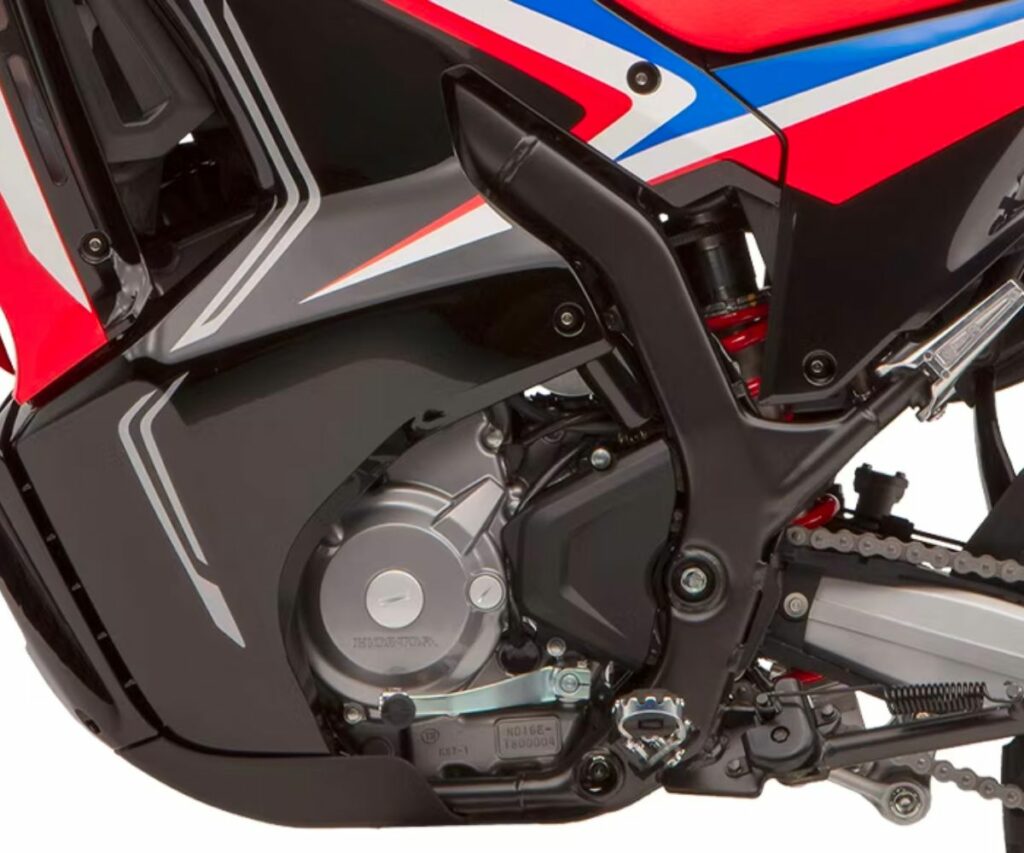
Smaller rotors might not provide as much bite as you would like on the street, but they do allow for maximum control on the trail, so it’s a trade-off you have to be aware of.
Forks
Supermoto forks will usually be inverted, like many sports bikes. The forks are thicker, you get very little flex, they handle much better, and they perform well under pressure, such as from hard braking.
You need rigid forks up front for precise handling and feel, which is important on a bike that’s built to go fast and perform well in bends. Inverted forks also add some weight to the bike, which results in an excellent balance of the chassis and confidence at speed.
Dual sports are fitted with conventional forks. They are less rigid than inverted forks but offer excellent feedback, which is essential when you’re riding off road.
Size
Supermotos and dual sports are similar in size and appearance. However, due to their different purposes, they do differ slightly.
Supermotos are slightly lower, with less ground clearance and a lower seat height. Dual sports sit a little taller to give the most ground clearance possible (great for off road), which makes the seat height taller.
Dual sports can sometimes have a bit more bulk to them thanks to factory accessories, such as windscreens and luggage racks, which are practical additions.
Price
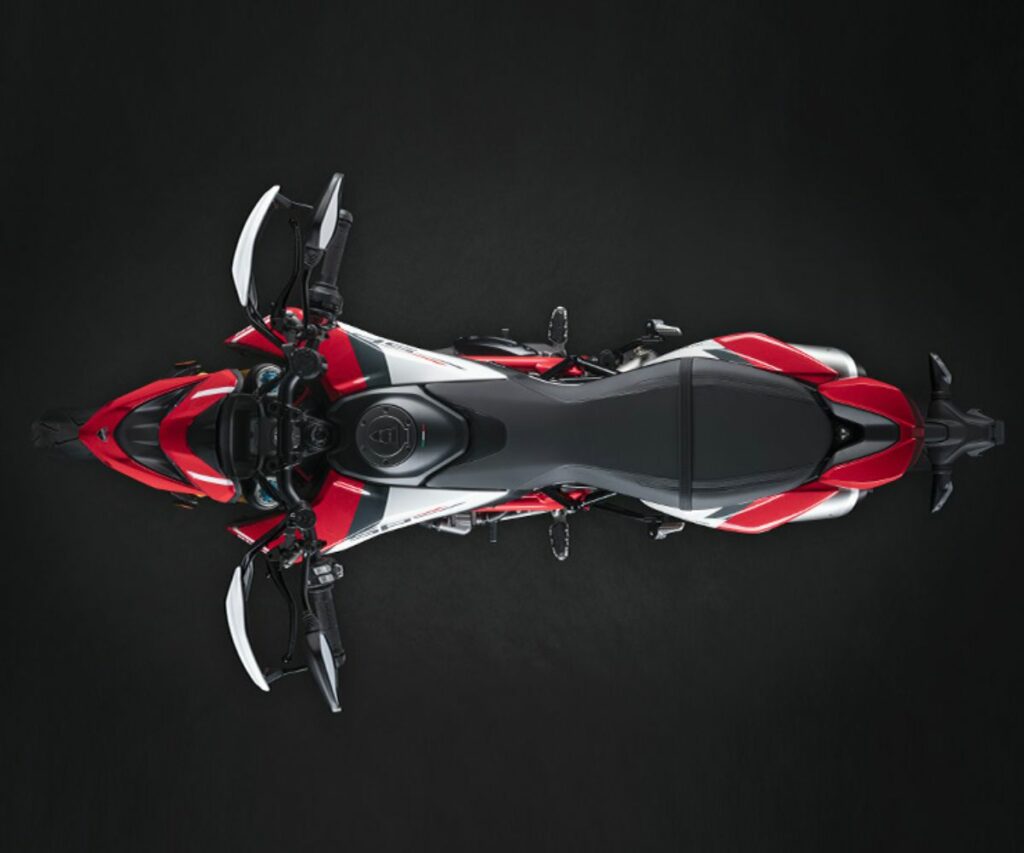
Supermotos are built to a high spec, and due to the use of sports-bike style components to achieve this spec, they are more expensive than dual sports. Without inverted forks, improved brakes, and sports tires, a supermoto wouldn’t perform at such a high level, and therefore for many, the cost is easily justified.
Dual sports do come up cheaper, and riders who are looking for versatility would be hard-pressed to go wrong with a dual sport. They are significantly cheaper than the big adventure bikes but essentially offer the same practicality for the same uses.
Which Is Better: Supermotos or Dual Sports?
As similar as they appear on the surface, the two types of bike are completely different animals when it comes down to the detail. You really need to assess your needs and what you want or expect out of your bike.
For me, I love supermotos because I’m mainly a street rider. I love the off-road characteristics of a supermoto paired with sports-bike energy, and the light weight makes for one of the best riding experiences you can get. When I have room in the garage, a Ducati Hypermotard will be tucked in there.
However, I also think dual sports like the CRF350L serve a great purpose, and I would have one of those over a big adventure bike any day of the week.